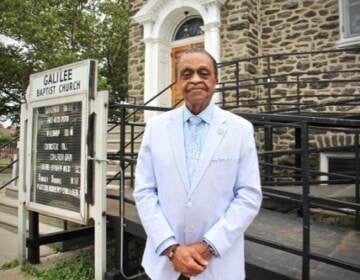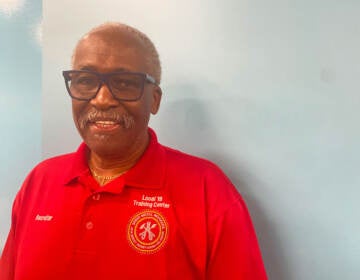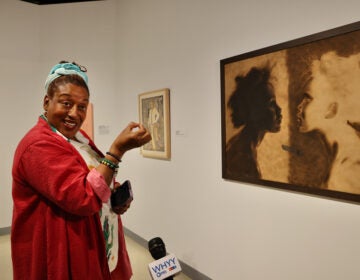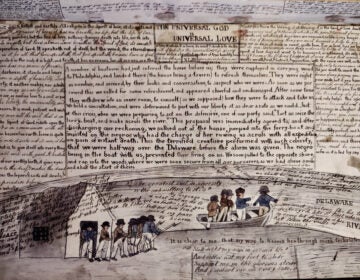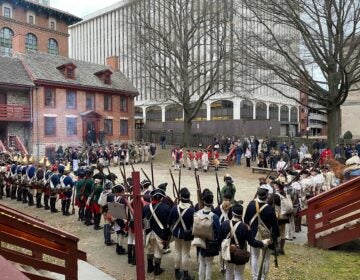Marian Anderson statue will make history as first Philly monument to a Black woman
Famed opera singer Marian Anderson will soon be immortalized with a statue outside of the Academy of Music.
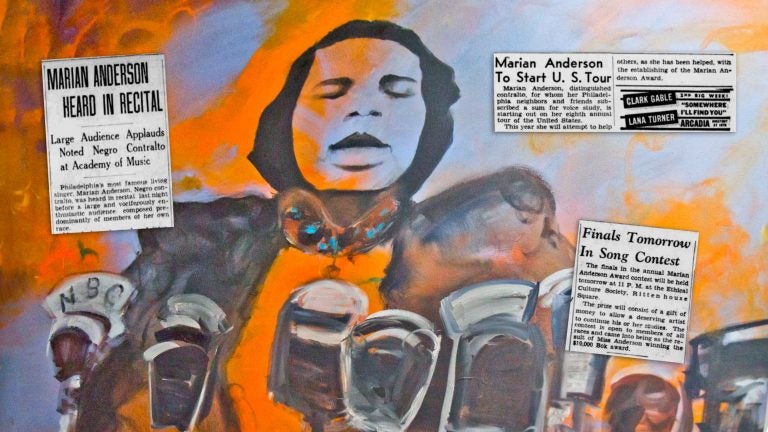
A portrait of Marian Anderson by artist Jeffery McNutt. (Kimberly Paynter/WHYY)
Famed opera singer Marian Anderson will soon be immortalized with a statue outside of the Academy of Music.
News that the likeness of the South Philadelphia-made contralto singer and trailblazer will welcome guests to the South Broad Street theater feels like progress to Jillian Patricia Pirtle, CEO of the National Marian Anderson Museum and Historical Society. She is ecstatic to see the project 25 years in the making move ahead.
“From a young age, I was led to believe that if I put my heart, mind, and talent to a task, anything would be possible,” Pirtle said. “When you’re a young child, you need examples of that and Marian Anderson was one of those.”
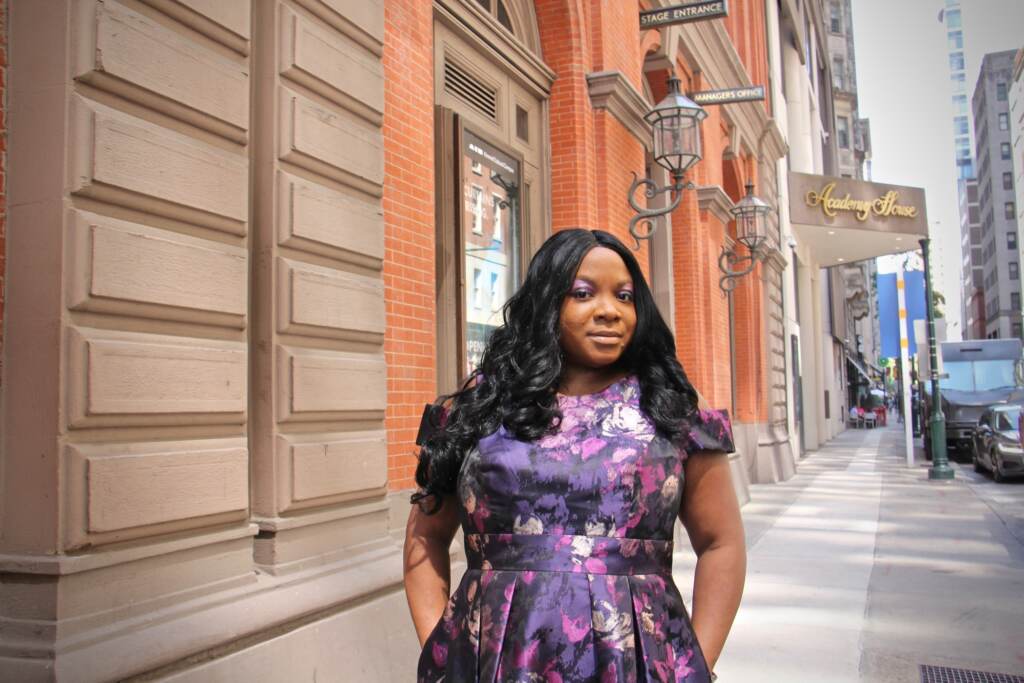
Pirtle expects the new art to stand on the north end of the steps at the Academy of Music, where the songstress performed numerous times throughout her life. While there are other statues inspired by Black women in the city, including University of Pennsylvania’s “Brick House,” the Anderson statue will be the first freestanding work of art in the city honoring a specific Black woman.
Pirtle said her admiration for Anderson began when she was four, on her mother’s lap at the Academy of Music where she saw her and Audrey Hepburn perform at a UNICEF concert in the 1980s.
She got to know the museum’s founder, Blanche Burton-Lyles as a young woman when the pianist made her a fellow through the Marian Anderson Historical Society’s Scholars Program and Foundation.
She went on to graduate from University of Arts, which was Philadelphia Music Academy when Anderson was denied admission because of her race in 1921.
“Because of the color of her skin, they wouldn’t allow her to get the college education of music that she so longed for,” Pirtle said. “80 years after her rejection, I walked out of that university with two degrees. Everything Marian Anderson went through was so someone like me wouldn’t have to suffer.”
Some of Anderson’s most notable performance locations include Carnegie Hall and the White House. She was the first Black singer to perform at the White House in 1936. In 1939, she sang at the Lincoln Memorial in Washington D.C after the Daughters of the American Revolution refused to allow her to sing at Constitution Hall. She was also the first Black person to be a member of the New York Metropolitan Opera.
Pirtle, working with a team of volunteers, has already succeeded in raising nearly $200,000 for the Marian Anderson Memorial Statue Fund. In total, the team believes the statue will cost between $500,000 and $700,000. Fred Stein, one of the volunteers working to fundraise, said the statue is worth every penny.
“Marian Anderson was much more than one of the greatest voices in the world,” Stein said. “She broke ground for civil rights so that’s what this statue will ultimately represent in her hometown and in the birthplace of democracy.”
Because of the proposed location at the Academy of Music, the artwork will require the Historical Commission’s approval. It will also need to go through the Philadelphia Art Commission once they choose an artist.
According to Stein, the vision includes a digital plaque that would tell the story of Marian Anderson, play her music, and provide lighting so the statue will be visible day or night.
Eventually, Stein also wants to raise additional dollars so there would be a digitized walk that would include the intersection of Broad and Walnut streets, where the Marian Anderson Music Walk of Fame is located, the Academy of Music, the Marian Anderson Recreation Center on 17th and Bainbridge streets and the Marian Anderson Historical Society and Museum at 762 South Martin Street. All of these amenities and a regular endowment would cost more than $1 million. The statue is supposed to also support the National Marian Anderson Museum and Historical Society with an endowment from the funding that is left from the building of the statue.
In the meantime, supporters are banding together to keep the museum thriving. City Councilmember Kenyatta Johnson recently sent a $100,000 grant to the museum to help after burst pipes damaged the building.
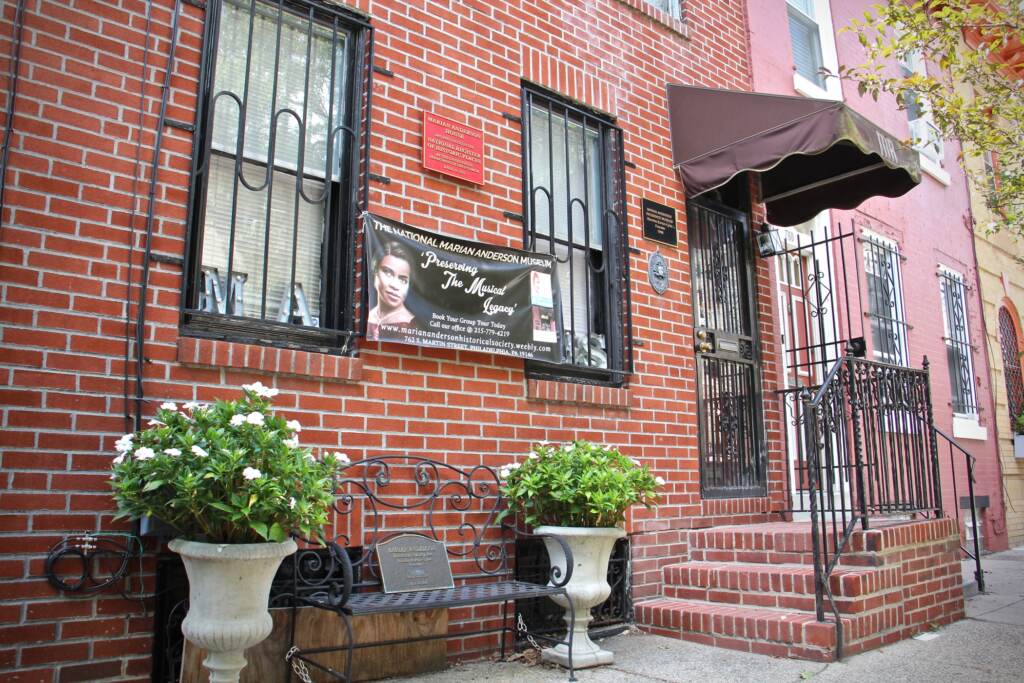
The Washington D.C.-based National Trust for Historic Preservation also recently gave $75,000 to help repair the museum’s exterior. That money will top off cash raised through the museum’s GoFundMe, which is also earmarked for building repairs.
Johnson said he wants to keep the museum strong and looks forward to the statue coming to his district, too.
“It makes it all the more special that the statue will be where she grew up, not too far from her home residence,” Johnson said. “It also gives our residents a sense of pride that we have this great tourist attraction inside our neighborhood.”

Subscribe to PlanPhilly
WHYY is your source for fact-based, in-depth journalism and information. As a nonprofit organization, we rely on financial support from readers like you. Please give today.



